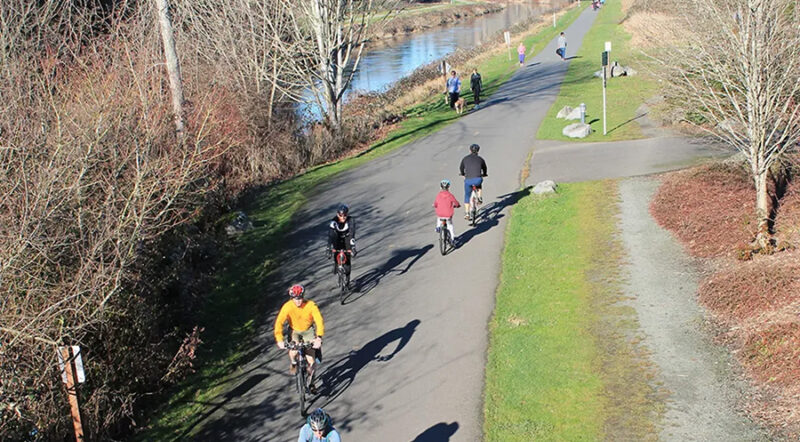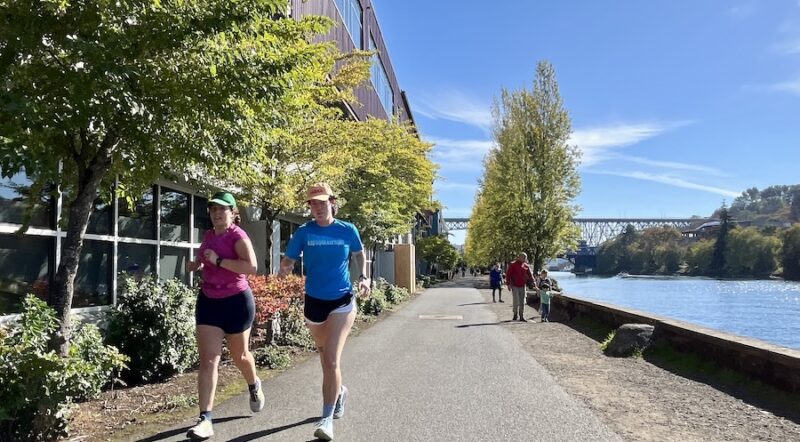Seven Bucket List Rail-Trail Destinations Around the World
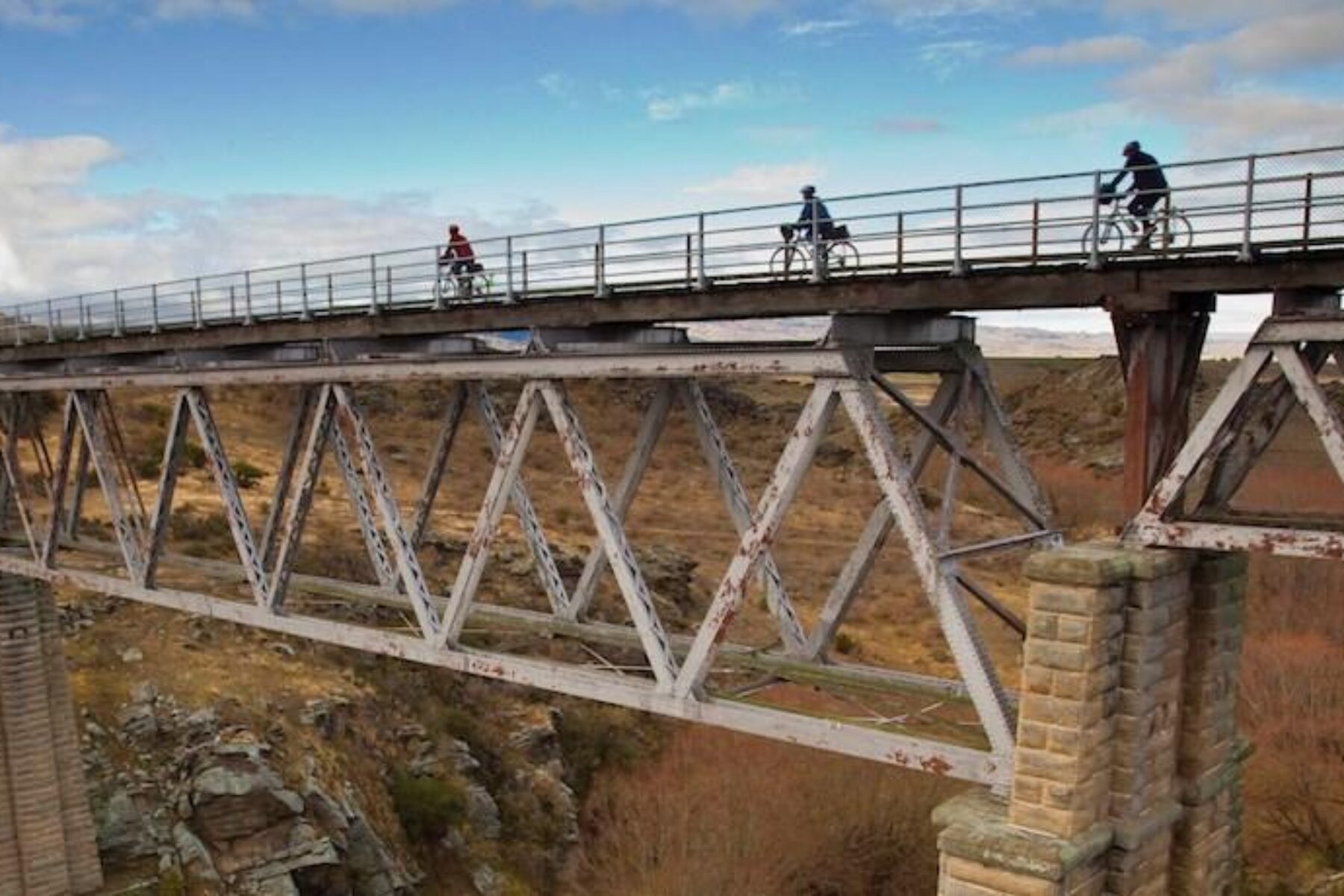
With more than 24,000 open miles of rail-trails to explore—more than any other country in the world—trail lovers in America are a pretty lucky bunch. But the rail-trail movement is not limited to our borders. Thousands more miles of rail-trails are available all across the globe. For World Tourism Day, we thought we’d take a look a few bucket-list-worthy international rail-trail destinations.
1. Waterford Greenway (Ireland)
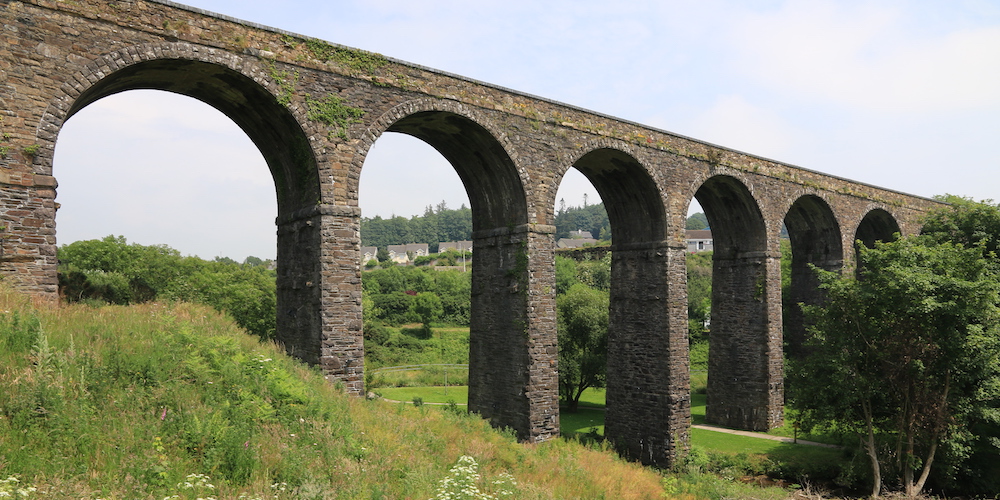
Just opened in 2017, the Waterford Greenway is already a recreational gem in the southeastern region of the Emerald Isle. Running nearly 29 miles (46 kilometers), Ireland’s new—and longest—rail-trail features 11 bridges, three viaducts, a 1,300-foot (400-meter) tunnel and views of the scenic Suir Valley. Traveling from Waterford, the country’s oldest city (founded by Vikings), to the coastal town of Dungarvan, perched on a picturesque harbor, the paved pathway follows the former Waterford-to-Mallow rail line, which opened in 1878. Other perks of the route include Norman castles, medieval ruins and a nearby heritage tourist train.
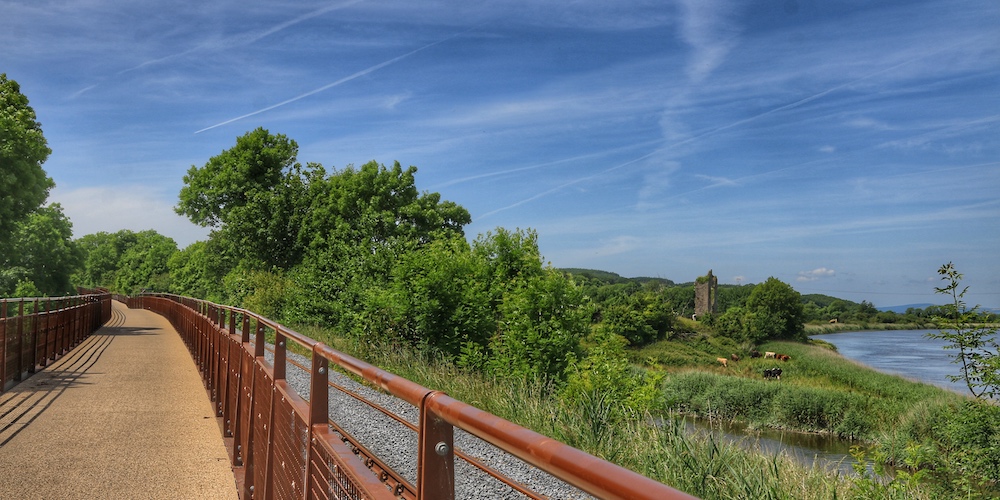
2. Otago Central Rail Trail (New Zealand)
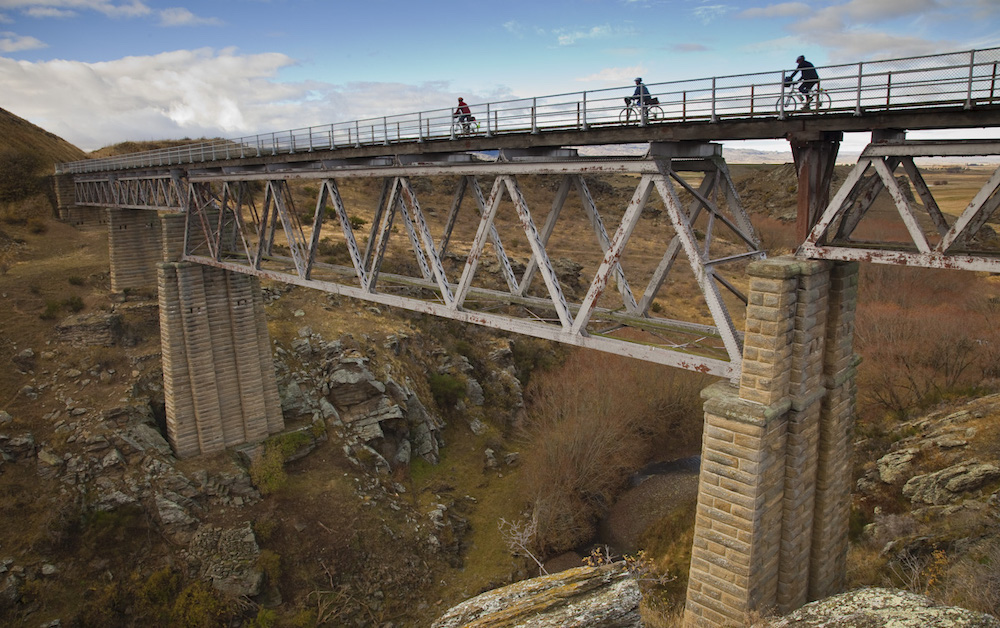
New Zealand’s first rail-trail, the Otago Central Rail Trail, offers a series of gorgeous backdrops: wind-swept vistas, jagged mountains, lush green farm fields and jaw-dropping river gorges. The well-kept gravel pathway spans more than 90 miles (150 kilometers) and is named after the railway line built here in the early 20th century to transport produce from the agricultural heartland. Before the railway, gold fever swept the area in the 1860s. Many relics of this gold-mining era can be found along the pathway, but perhaps none as unusual as the Platypus, New Zealand’s first submarine—built in 1874 to dredge the river beds for gold—and now on display at the Strath Taieri Museum in Middlemarch, the trail’s eastern terminus. Queenstown, known as a hub for skiing, whitewater rafting and other extreme sports, is not far from the rail-trail’s western end at the town of Clyde.
3. Cowichan Valley Trail (Canada)
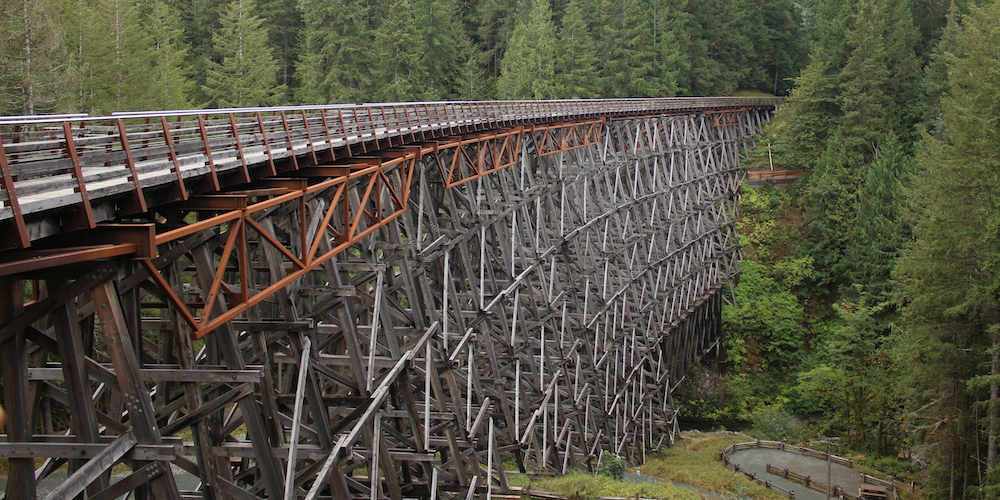
Travelers looking for a rail-trail with ‘wow’ factor should check out the Cowichan Valley Trail on Vancouver Island in British Columbia. The stunning Kinsol Trestle alone is worth a visit, not to mention the trail’s seven other trestles, plus a range of beautiful backdrops of forest and farmland, and friendly small towns along its 76-mile (122-kilometer) route. The packed-gravel pathway is also part of Canada’s The Great Trail, a nearly 15,000-mile route across the country connecting each of its 13 provinces and territories and linking three oceans: the Atlantic, Pacific and Arctic.
4. Coulée verte René-Dumont (France)
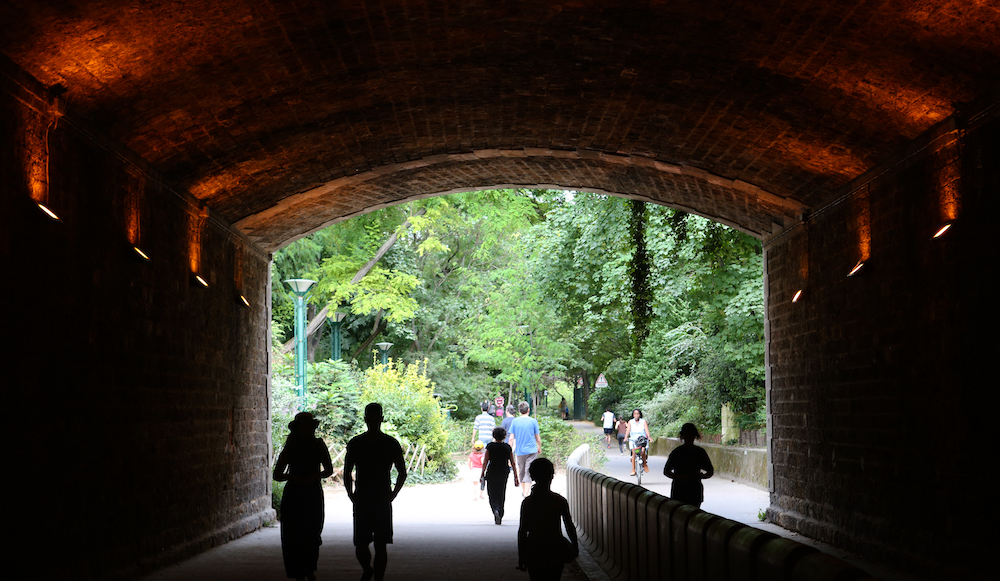
Nestled in Paris, the Coulée verte René-Dumont was created by two visionaries: landscape designer Jacques Vergely and architect Philippe Mathieux, who gave the world its first introduction to a rail-trail built atop an elevated viaduct with the trail’s 1993 debut. The 3-mile route follows a railway line built in 1859 that ran from the center of Paris to a fortress at Vincennes. Today, the archways beneath the viaduct house a series of art galleries, artisan shops and cafés called Le Viaduc des Arts. Here, a sign pays homage to the trail’s namesake, René Dumont, who, in 1974, was the first environmentalist candidate in the country’s presidential election. The “Coulée verte” part of the trail’s name means “green corridor” and it’s a perfect description for the garden-lined walkway that rises 30 feet above the streets below. Those who have visited Manhattan’s High Line will easily see how the French trail influenced its famed New York cousin.
Related magazine article: Paris’ Coulée verte René-Dumont: In the City of Love, We Fell for a Rail-Trail
5. Great Victorian Rail Trail (Australia)
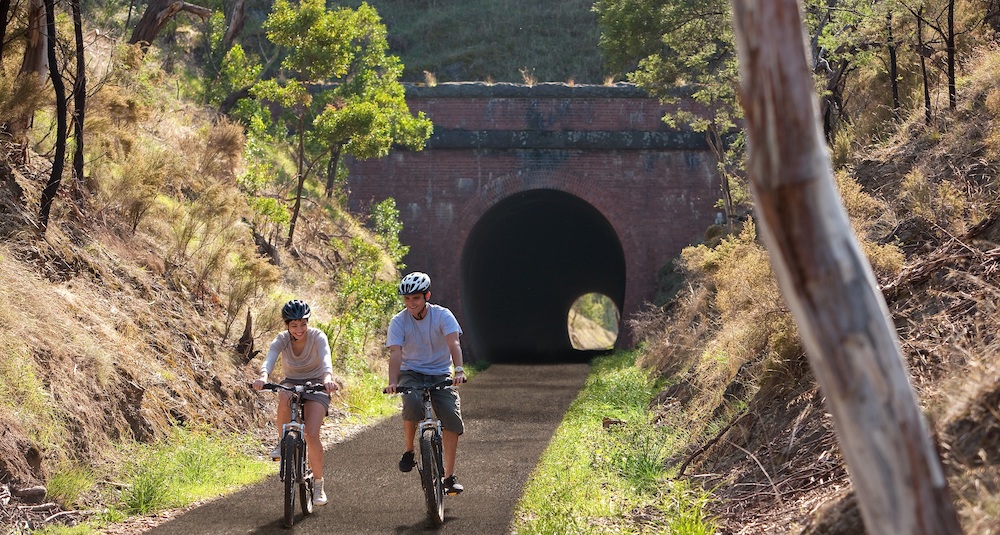
Stretching 83 miles (134 kilometers), the Great Victorian Rail Trail is one of Australia’s longest rail-trails and is surfaced largely with compacted gravel. Located in the southeastern corner of the island nation and about a 2-hours’ drive from Melbourne, the rail-trail traverses the alpine beauty of Victoria’s High Country with breathtaking views of the countryside, the Goulburn River valley and eucalyptus forests. Highlights include passage through the Cheviot Tunnel—which was completed in 1889 and spans just over 650 feet—and access to Lake Eildon, a hotspot for boating and watersports of all kinds. With the gentle grade typical of rail-trails and a handful of charming historical towns along the way to visit, this one makes for a standout long-distance ride. For other swoon-worthy adventures in the country, check out Rail Trails Australia.
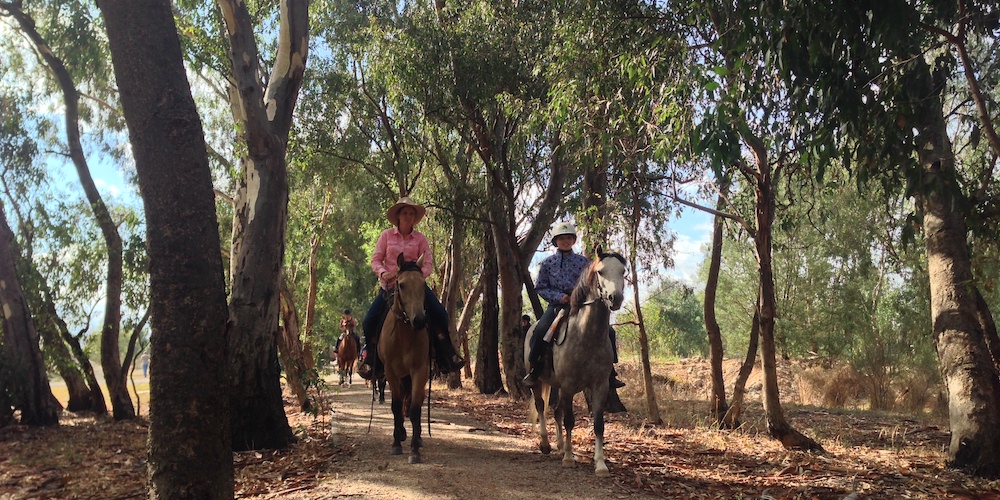
6. Green Corridor (Singapore)
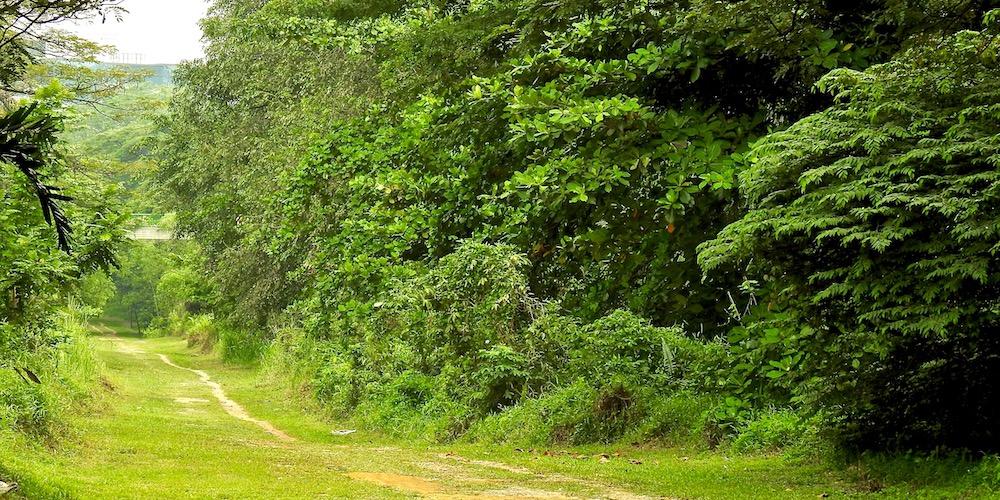
The Green Corridor is an apt name for a trail in a place that likes to refer to itself as the “Garden City.” With Singapore’s population of nearly 6 million, this improving rail-trail—which first opened for walking and biking in 2012—offers a tranquil emerald oasis to escape the hustle and bustle of urban life. The rustic unpaved pathway spans nearly 15 miles (24 kilometers), crossing the entirety of the small country, buffered by lush forest but still easily accessible from the surrounding homes, schools and businesses. Following a former railroad that connected Singapore and Kuala Lumpur in neighboring Malaysia for almost a century, trail adventurers will see old railroad bridges, train stations and other relics of the line.
7. Via Verde de la Sierra (Spain)
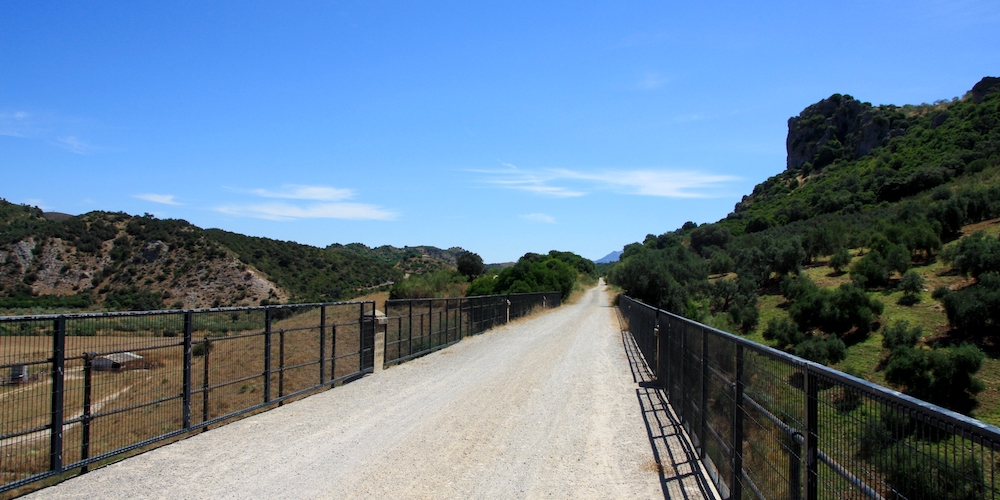
Spain offers an enticing array of rail-trails—thousands of miles of these Vías Verdes (which means “green ways”) can be found throughout the country. A standout is the Via Verde de la Sierra (also called the Sierra Greenway), which offers a gorgeous 23-mile (38-kilometer) route between the Puerto Serrano and Olvera villages in southern Spain. Views of the Cádiz Mountains and the Guadalete River reward adventurers, plus travelers will pedal over spectacular viaducts and through more than two dozen tunnels. Fun fact: Trains never ran down the tracks; work on the Jerez–Almargen railway began in the late 1920s, but the Spanish Civil War derailed its completion.
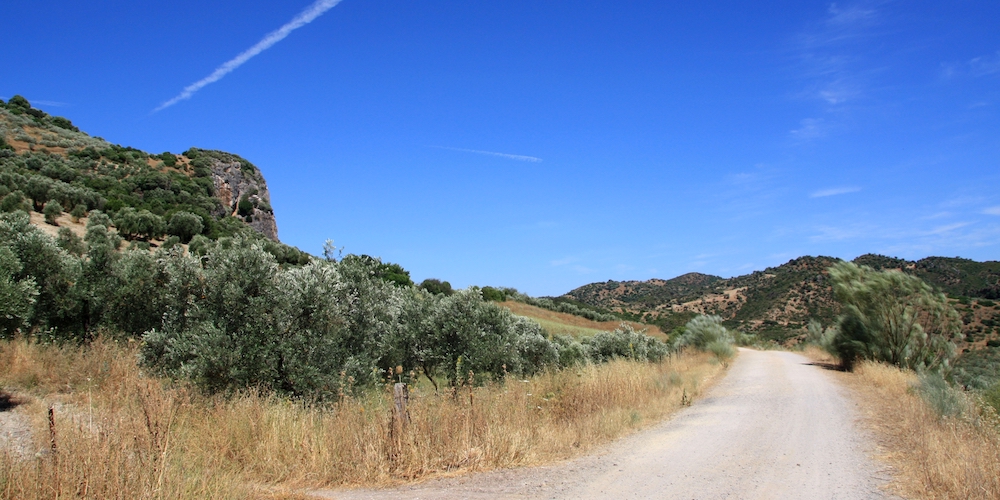

Donate
Everyone deserves access to safe ways to walk, bike, and be active outdoors.


